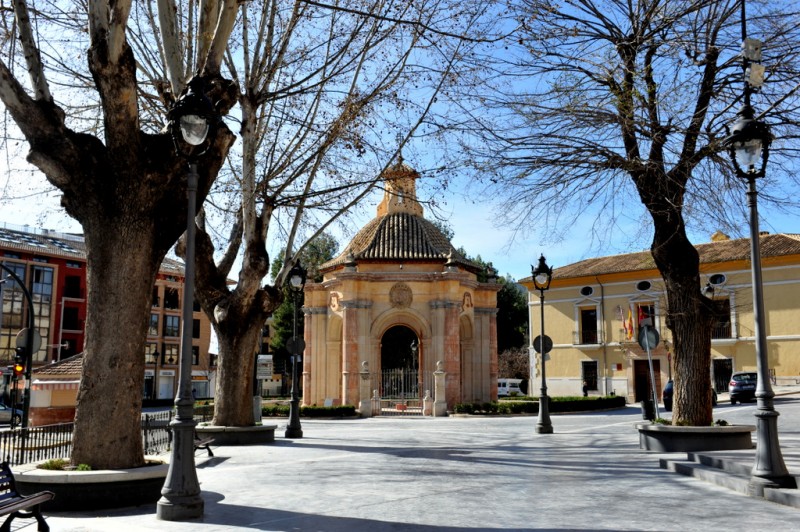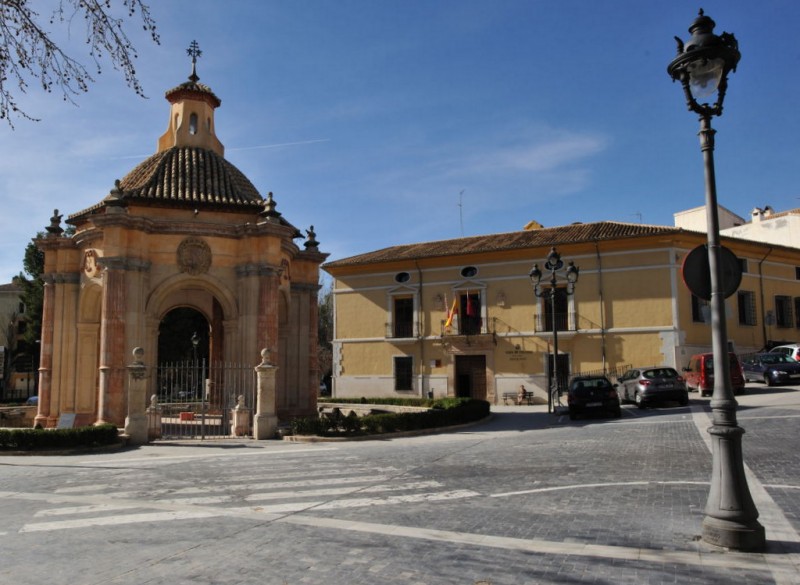- Region
- Vega baja
- Marina Alta
- Marina Baixa
- Alicante
- Baix Vinalopo
- Alto & Mitja Vinalopo
-
ALL TOWNS
- ALICANTE TOWNS
- Albatera
- Alfaz Del Pi
- Alicante City
- Alcoy
- Almoradi
- Benitatxell
- Bigastro
- Benferri
- Benidorm
- Calosa de Segura
- Calpe
- Catral
- Costa Blanca
- Cox
- Daya Vieja
- Denia
- Elche
- Elda
- Granja de Rocamora
- Guardamar del Segura
- Jacarilla
- Los Montesinos
- Orihuela
- Pedreguer
- Pilar de Horadada
- Playa Flamenca
- Quesada
- Rafal
- Redovan
- Rojales
- San Isidro
- Torrevieja
- Comunidad Valenciana
The Templete and the Bathing of the Cross of Caravaca
The Templete is one of the most iconic monuments in Caravaca de la Cruz

The Templete is often referred to by locals simply as the Bañadero, the bathing place, due to its significance in the Fiestas of the Santísima y Vera Cruz at the beginning of May, although it is also the most instantly recognisable and iconic of the many monuments within the Holy City of Caravaca de la Cruz.
The Templete we see today was built in 1762 on the same location as a former chapel, and stands above a water fountain which has been the scene of a ritual act of blessing the waters of the city and the outlying agricultural areas since at least 1384.
Beneath it is the point at which the medieval irrigation channels joined, supporting agricultural activity in the land around Caravaca and therefore an important location, and was marked with a "Humilladero" in the shape of a cross, a symbol indicating its importance.
The Templete was completed in 1801 and has been at the centre of the key ritual of the annual Fiestas of the Santísima y Vera Cruz (the Cross of Caravaca, which is at the heart of the 7-yearly Holy Jubilee). These fiestas are celebrated in early May and on 3rd May the Cross is bathed in the waters of the Templete, blessing the waters of the town and all the lands around them.

As with many elements of modern fiestas, the rituals enacted today have a basis in local legend: in this case the story relates to an episode of locust infestation, when a plague of the insects from the African mainland descended on the area of Caravaca de la Cruz, ravaging cereal crops. Placing their faith in the power of the cross to save them, residents bathed the Vera Cruz in the water and more water was sprinkled over the swarm: a miracle occurred as the locusts began to die, and within minutes the ground was a writhing black mass of dying locusts.
Locals still take the water which is blessed on 3rd May to sprinkle on their plants and agricultural plots, and the remaining water is conserved by the Cofradía of the Santísima y Vera Cruz for use in religious activities throughout the year.
The bathing of the cross takes place at 21.00 on the third day of the fiestas each year following a mock skirmish between the forces of the Moors and Christians, just before the Vera Cruz is triumphantly paraded to the church of El Salvador. followed by an enormous fireworks display.

The Templete stands at the end of the Glorieta, or Corredera, a large tree-lined plaza which is used for many cultural events including the the Semana Santa processions and as a cool, shaded walkway by locals throughout the year (click for map).
The structure of the Templete
Construction of the baroque Templete, an octagonal building within a circular area which was previously occupied by chapel, began in 1762 and concluded in 1801, designed by architect José López. There are four main elements: the podium on which it stands, and from which the exterior pillars protrude, the main body of the building, the dome with its Arabic tiling, and the six-sided roof lantern.
The corners consist of pilasters and half-columns, connected by semi-pointed arches at the top of which are emblems and coats of arms. Seven feature a design with the four-armed cross on a cloud in the centre, and the other is a royal coat of arms decorated with the Golden Fleece.
Further information about Caravaca is available from the tourist office (Plaza de España, 7, telephone 968 702424, email turismo@caravacadelacruz.es).
Or for more local information, including the Holy Jubilee Year as well as local news and what’s on, go to the home page of Caravaca Today.
staff.inc.ali


